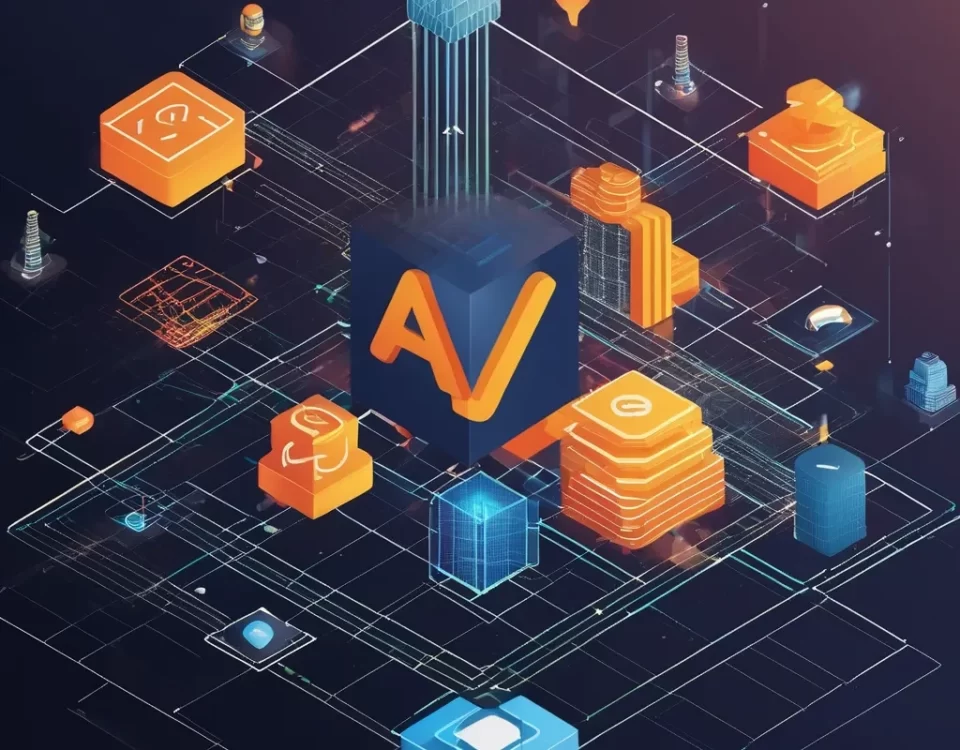
Revolutionizing AI Development: The Power of Serverless Solutions
January 26, 2025
LLM Agents: How They Work and Where They Go Wrong
March 31, 2025What is Shadow AI?
Shadow AI refers to artificial intelligence systems or tools that employees or departments use without official approval or oversight from their organization’s IT or security teams. These tools are typically adopted to solve immediate problems or boost efficiency, but they can expose businesses to risks such as data breaches, legal violations, and regulatory non-compliance if not governed properly.
Without proper governance, Shadow AI can introduce vulnerabilities into your infrastructure, making sensitive data accessible to unauthorized parties. As AI becomes increasingly ubiquitous, organizations must understand these risks and take proactive steps to secure their operations.
The Rise of Shadow AI in the Modern Workplace
As more employees turn to AI tools like ChatGPT, Google Bard, and other generative AI applications to streamline their workflow, Shadow AI has become a growing concern for businesses. Often, employees bypass IT approval, opting for tools they perceive as faster, more efficient, or easier to access. This unauthorized usage is driven not only by slow AI adoption but also by employees’ desire to experiment with innovative technologies to solve problems in creative and agile ways.
Shadow AI can empower teams to streamline processes that might otherwise be slowed down by traditional workflows. However, without adequate oversight, Shadow AI can create a parallel network of tools operating outside the company’s security framework.
To fully harness the benefits of AI, decision-makers must strike a balance between empowering employees to use these tools and ensuring that AI usage remains secure, compliant, and aligned with company policies. Rather than viewing Shadow AI as a threat, businesses can turn it into a catalyst for growth by fostering an environment where innovation flourishes within the boundaries of strong governance.
That’s why AI governance is essential—it provides the framework that allows businesses to encourage safe experimentation with AI tools while maintaining control over security and compliance. Leaders play a pivotal role in shaping policies that promote innovation while ensuring that AI remains a secure and compliant tool in the organization’s strategic arsenal.
Risks Associated with Shadow AI
While Shadow AI can be a powerful driver of innovation, it’s important to understand the risks associated with it to ensure that creativity doesn’t come at the expense of security and compliance. The following sections outline the key challenges businesses must address to safely harness the benefits of Shadow AI.
1. Data Security Breaches
Shadow AI tools may process sensitive information without adhering to your company’s security protocols, leading to potential data breaches. For example, in 2023, Samsung faced a breach when employees used tools like ChatGPT to handle proprietary data, resulting in unintended exposure to third-party platforms. Source
2. Compliance and Legal Issues
Unapproved AI tools may not comply with industry regulations, such as the EU AI Act, which can lead to legal penalties and reputational damage. Ensuring that AI usage aligns with regulatory standards helps avoid such risks.
3. Operational Risks and AI Hallucinations
Generative AI models, when not governed properly, may produce misleading information (known as “AI hallucinations”). This can lead to poor decision-making, especially when different departments use uncoordinated tools, resulting in inefficiencies and potential financial losses.
For example:
A financial team could unknowingly use an AI algorithm to predict market trends based on flawed assumptions or outdated data. Without proper oversight, this could lead to poor investment decisions, significant financial losses, and compliance issues.
Potential Benefits of Shadow AI (When Managed Properly)
While Shadow AI introduces risks, it can also unlock substantial benefits when managed responsibly. When employees use AI effectively, they can automate repetitive tasks, enhance problem-solving, and increase productivity. For instance, using generative AI chatbots to summarize meetings can save hours of manual effort, enabling employees to focus on strategic projects. In some cases, Shadow AI can even be a driver of innovation, as employees discover new tools that can be integrated organization-wide.
How to Detect Shadow AI in Your Organization
Proactively identifying Shadow AI within your business is essential for both mitigating risks and harnessing its benefits. Here are key signs to help you spot Shadow AI usage:
Sudden Increases in Productivity
Sharp productivity gains in certain teams may indicate the use of unauthorized AI tools. While the increase in efficiency might seem positive, it could signal a lack of visibility over critical data handling and AI usage.
Unmonitored Data Traffic
Watch for unusual data traffic directed toward third-party AI platforms. Large, unexplained data uploads to platforms like OpenAI, Google Cloud AI, or Azure without IT knowledge may be a sign that Shadow AI tools are being used.
Irregular API Calls or Suspicious Queries
Unexplained API calls to external platforms can also be a red flag. Setting up alerts to monitor such activity will help identify unauthorized tools in use, ensuring the organization can maintain control over AI resources and safeguard data security.
Mitigating the Risks of Shadow AI in Your Business
Effectively addressing Shadow AI requires a holistic strategy that combines governance, employee education, and monitoring tools. By taking proactive steps, businesses can mitigate risks while still harnessing the benefits of AI.

Best Practices for Preventing Shadow AI
To prevent Shadow AI from compromising your business’s security and compliance while fostering innovation, implement the following best practices:
Establish Clear Access Controls
Limit access to AI tools by using role-based access controls (RBAC) and strict permissions management. This ensures only authorized users can access AI tools, preventing unauthorized usage.
Perform Regular Audits
Conduct routine audits of your AI ecosystem to ensure compliance with both internal policies and external regulations. This helps maintain control over all AI activity within your organization and identify potential risks early.
Use Enterprise-Grade AI Solutions
Provide employees with approved, enterprise-grade AI tools like Google Vertex AI or Azure Machine Learning. These platforms offer enhanced security features and built-in compliance safeguards, allowing employees to use AI confidently without bypassing corporate governance.
Protect Your Business from Shadow AI with Holistic AI Safeguard
Leverage Holistic AI’s AI Safeguard, an enterprise-grade solution designed to ensure secure, compliant, and scalable AI deployment across your organization.
- Maximize Productivity: Implement Gen AI tools to enhance team capabilities, while safeguarding data and operations.
- Secure Your Data: Detect and track sensitive data submitted in AI prompts, preventing data breaches and compliance issues.
- Confidently Deploy LLMs: Protect against risks like bias, toxicity, and hallucinations, ensuring that AI applications meet both technical and ethical standards.
- Board-Level Oversight: Offer transparent AI governance reporting and risk metrics to build stakeholder confidence.
- Digital Transformation: Accelerate your organization’s AI adoption with enterprise-grade security and compliance frameworks.
- Enterprise Risk Management: Implement comprehensive AI governance strategies to protect your assets and reputation.
Don’t let Shadow AI put your business at risk. Establish enterprise-wide AI governance today by requesting a demo of AI Safeguard and discover how Holistic AI can help secure your AI operations while driving innovation.


